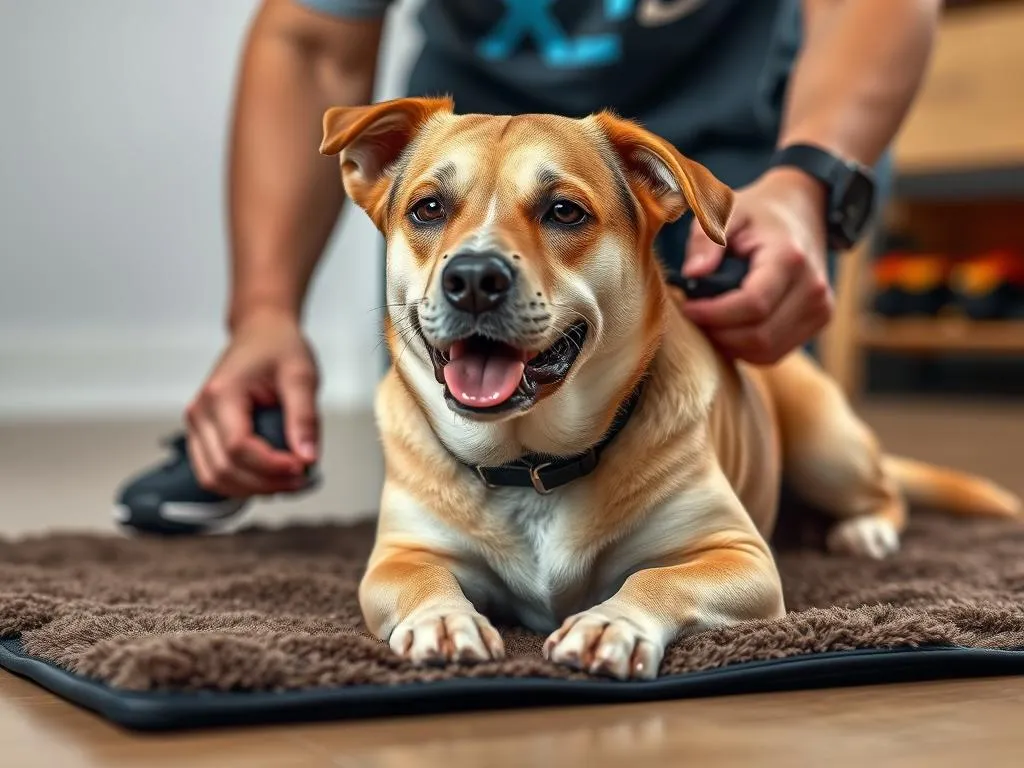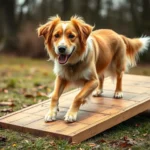
Introduction
Dog training is an essential aspect of pet ownership that helps foster a well-behaved and happy canine companion. Among various training techniques, dog mat training stands out as an effective method that can enhance obedience and create a calm living environment for both dogs and their owners.
Overview of Dog Mat Training
Dog mat training involves teaching your dog to go to and stay on a designated mat. This technique serves multiple purposes, including providing a safe space for your dog, reinforcing commands, and helping manage behavior during distracting situations. By using a mat as a focal point in training, you can help your dog understand boundaries and develop self-control.
The target audience for this article includes dog owners seeking effective training methods and trainers looking to expand their toolkit with innovative techniques.
Understanding Dog Mat Training
Definition and Concept
At its core, dog mat training is about using a specific mat as a training tool. The dog learns to associate the mat with positive experiences, such as treats and praise, which encourages them to stay on the mat when instructed. This technique has evolved over time, with roots in traditional obedience training methods. Historically, trainers have utilized physical boundaries to help dogs understand their limitations and improve their focus.
Psychological Benefits for Dogs
One of the significant advantages of dog mat training is its psychological benefits. Dogs inherently thrive on structure and routine. By establishing a designated mat for training, you provide your dog with a clear boundary that fosters a sense of security. This method promotes calmness and focus, allowing dogs to better manage their impulses. The presence of a mat can also help reduce anxiety in high-stress situations, as it serves as a safe haven for the dog.
Preparing for Dog Mat Training
Choosing the Right Mat
Selecting the right mat is crucial for effective dog mat training. Look for mats made of durable materials that can withstand wear and tear, especially if you have a larger breed. The mat should also be easy to clean, as training can sometimes lead to accidents. Consider the size of the mat in relation to your dog’s breed; larger dogs may need spacious mats, while smaller breeds might require smaller models. Some recommended mat types include:
- Rubber mats for better traction.
- Orthopedic mats for older dogs requiring extra comfort.
- Waterproof mats for easy cleaning.
Creating the Training Environment
A distraction-free space is vital for successful dog mat training. Choose a quiet area in your home where your dog feels comfortable and secure. Consistency in the training location helps reinforce the behavior you want to achieve. Ensure the area is free from loud noises or other animals that might distract your dog during training sessions.
Essential Training Tools
While the mat is the primary tool for dog mat training, several other tools can enhance the process:
- Leashes: For controlling your dog during initial training.
- Treats: Use high-value rewards to motivate your dog.
- Clickers: A clicker can be beneficial for marking desired behaviors precisely.
Step-by-Step Guide to Dog Mat Training
Introducing the Mat
Start by familiarizing your dog with the mat. Place it in a quiet area and allow your dog to explore it freely. Use treats to encourage your dog to step onto the mat. A simple method is to throw treats onto the mat so your dog associates it with positive experiences. Be patient and give your dog time to investigate the mat at their own pace.
Teaching the “Place” Command
Once your dog is comfortable with the mat, it’s time to teach the “place” command. Begin by standing near the mat and giving the command while pointing to it. When your dog steps onto the mat, immediately reward them with praise and a treat. Repeat this process several times, gradually increasing the distance from which you give the command. Consistency is key, so practice this step daily until your dog understands the command.
Reinforcing the Behavior
To reinforce the behavior of staying on the mat, reward your dog for remaining calm and in place. Use treats and verbal praise to positively reinforce the behavior. Timing is crucial; reward your dog immediately when they exhibit the desired behavior. This method strengthens their understanding of what is expected and encourages them to repeat it in the future.
Increasing Duration and Distance
Once your dog reliably goes to the mat on command, it’s time to increase the challenge. Start by gradually extending the time your dog remains on the mat before receiving a reward. Use a stopwatch or timer to help track the duration. Next, practice moving further away from the mat while still maintaining the command. This step encourages your dog to stay focused on the mat despite your distance.
Generalization and Real-Life Application
To ensure your dog understands the mat’s purpose in different environments, practice dog mat training in various locations. Take the mat outside, to friends’ homes, or even in the backyard. Use the mat during everyday situations, such as when guests arrive or during mealtimes. This practice helps reinforce the command and makes it applicable in real-life scenarios.
Common Challenges and Solutions
Distractions and Impulsiveness
One of the most common challenges in dog mat training is managing distractions. Dogs are naturally curious creatures, and external stimuli can easily divert their attention. To combat this, practice in increasingly distracting environments, gradually introducing new challenges. Use high-value treats to maintain focus and encourage your dog to remain on the mat despite distractions.
Inconsistent Behavior
If your dog exhibits inconsistent responses to the “place” command, it’s essential to address this promptly. Inconsistency may arise from a lack of regular practice. Establish a training routine that includes multiple short sessions throughout the day. Reinforce positive behaviors consistently to help your dog understand that the mat is a place of reward and comfort.
Dog Resistance and Reluctance
Resistance to the mat can stem from various factors, including fear or uncertainty. Pay attention to your dog’s body language; if they seem hesitant, avoid forcing them onto the mat. Instead, create a positive association by placing treats on the mat and encouraging exploration. Gradually introduce the mat, allowing your dog to approach it at their own pace.
Advanced Dog Mat Training Techniques
Incorporating Advanced Commands
Once your dog has mastered the basics of dog mat training, consider incorporating advanced commands. You can teach your dog tricks such as rolling over or playing dead while on the mat. Use the mat as a base for these commands, reinforcing the idea that the mat is a place for learning and fun.
Using the Mat for Specialized Training
Dog mat training can also be adapted for specialized training needs. For example, if your dog struggles with anxiety, use the mat as a safe space where they can retreat when feeling overwhelmed. For therapy or service dogs, the mat can serve as a designated area where they can rest and remain focused during tasks. Tailoring mat training to specific needs enhances its effectiveness and ensures that your dog receives the support they require.
Maintaining Training and Building Lifelong Habits
Regular Practice and Reinforcement
Consistency is critical in maintaining the skills learned during dog mat training. Schedule regular training sessions to reinforce the behavior. Incorporate fun games and exercises to keep your dog engaged and interested in training. The more enjoyable the experience, the more likely your dog will want to participate.
Monitoring Progress
Tracking your dog’s progress is essential for recognizing when to advance their training. Keep an eye on their comfort level and willingness to engage with the mat. If your dog shows signs of stress or discomfort, take a step back and reassess your training approach. Gradually increase the complexity of tasks as your dog becomes more confident and skilled.
Building a Stronger Bond Through Training
Training is not only about teaching commands; it’s also about strengthening the bond between you and your dog. Dog mat training provides an excellent opportunity for building trust and communication. As your dog learns to respond to your commands, they will develop a deeper understanding of your expectations, resulting in a more harmonious relationship.
Conclusion
In summary, dog mat training is a versatile and effective method that can significantly improve your dog’s behavior and obedience. By following the outlined steps, you can create a structured and positive training experience that benefits both you and your canine companion.
Encourage yourself to embark on this rewarding journey, knowing that the time and effort invested in training will yield lasting benefits. Your dog will not only become more disciplined but will also develop a stronger bond with you through the training process.
Frequently Asked Questions (FAQs)
What breeds are best suited for mat training?
Most dog breeds can benefit from dog mat training, as it promotes focus and obedience. However, active or high-energy breeds may require additional patience and consistency during training.
How long does it take to train a dog to use a mat?
The time it takes to train a dog to use a mat varies based on the individual dog’s temperament and previous training experience. With consistent practice, many dogs can learn the basics within a few weeks.
Can mat training be used for all ages of dogs?
Yes, dog mat training can be adapted for dogs of all ages. Puppies may require shorter training sessions, while older dogs may benefit from gentle reinforcement of commands.
What to do if my dog refuses to go on the mat?
If your dog shows reluctance to approach the mat, try creating a positive association by using treats or toys placed on the mat. Gradually encourage them to explore it at their own pace without pressure.









